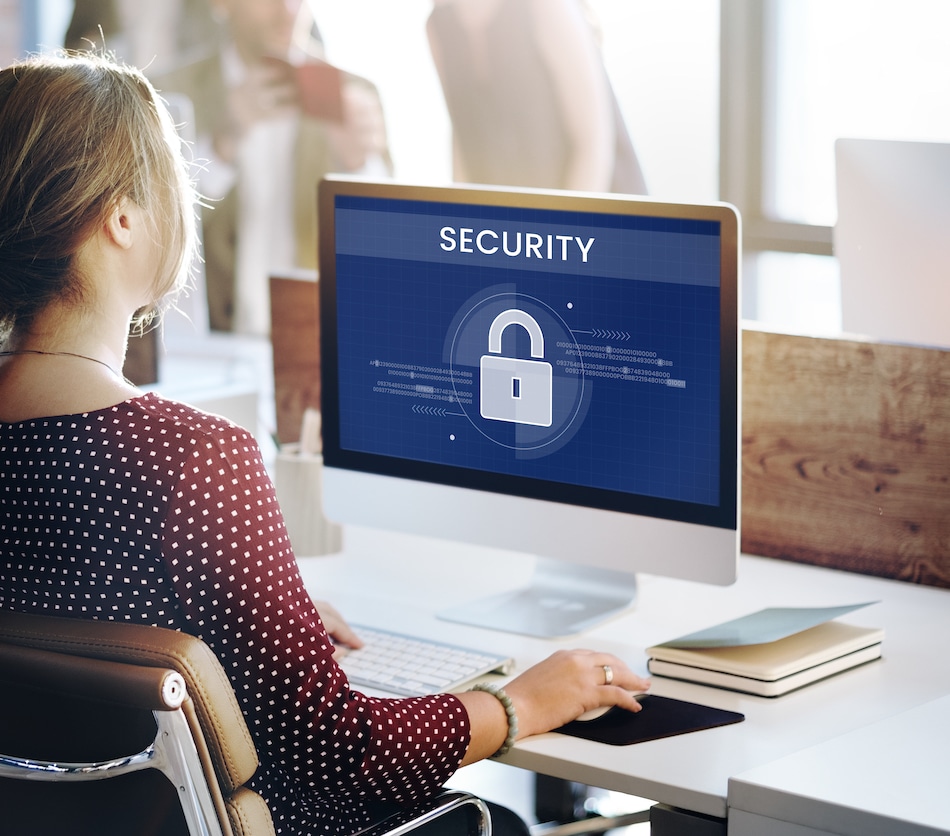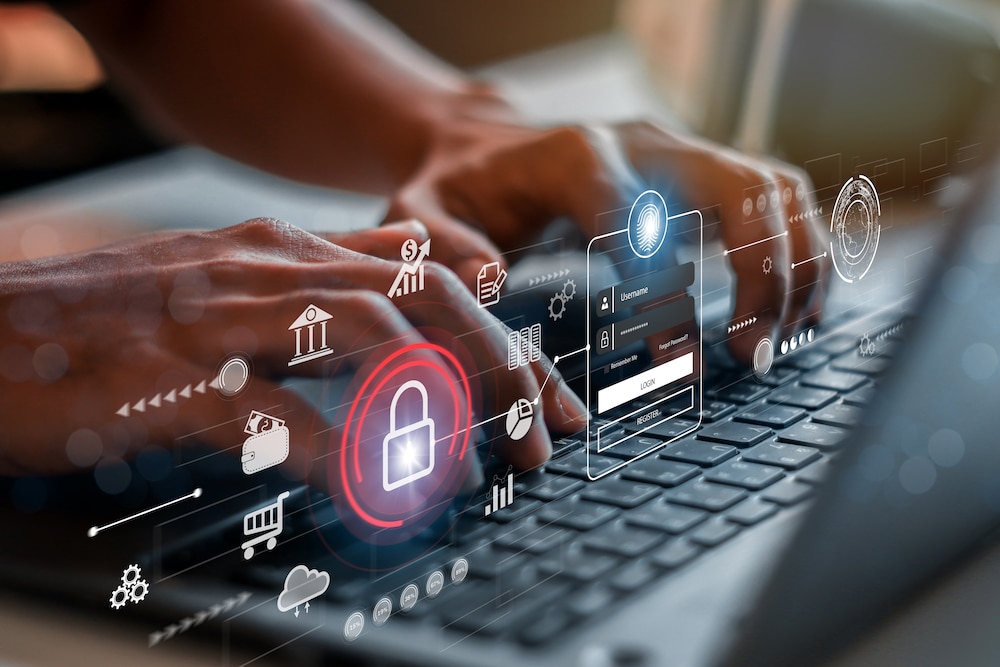Key Takeaways
The rise of cybercrime paired with cyber liability claims leads to costly litigation. Most company leaders feel paranoid about data protection and cybersecurity. But wouldn’t it be nice to make it more difficult for hackers? Weak authentication is a common vulnerability, and implementing multi-factor authentication (MFA) adds an extra layer of protection. Companies must administer it across all networks, systems, applications, and resources to adequately protect themselves — a 24/7 bouncer guarding the door of their digital assets.
A Summary of Today’s Cybersecurity Landscape
Phishing, keylogging, network sniffing, malware, credential theft, harvesting passwords—the list of cyber threats goes on. Believe it or not, by 2025, cybercrime will cost companies worldwide an estimated $10.5 trillion annually. But some companies are playing into hackers’ hands and not doing themselves any favors.
An IBM study revealed that 95% of cybersecurity breaches are down to human error. So, if a hacker can guess your password or a colleague’s from looking at a Facebook profile, you’re probably not as secure as you think. Password reuse is also a no-go, as it allows attackers to take advantage of your oversight and gain unauthorized access to multiple systems, networks, and data sets.
Now, as the costs of data breaches can extend from months to years, directors and officers feel the heat and want to avoid the financial losses, reputation damage, and even business continuity problems that can arise from cyberattacks.
Just sit with this for a moment: Businesses spend more than $75 billion each year dealing with ransomware costs.
With a business falling victim to ransomware every 11 seconds, nobody is in the clear. But small businesses are often among the hardest hit. And it doesn’t matter whether your company is a financial institution, healthcare startup, or involved in higher education: Each business has research data, billing information, employee databases, financial records, and personally identifiable information (PII).
Regardless of what authentication methods you use (or maybe you still don’t), there’s always a chance your company will be sued for a data breach. Lawsuits can hit company leaders hard, and that’s when you want to know you are covered with a good cyber liability policy.
How well do you know your cyber risk?
Take our Cybersecurity Stats of 2022 quiz if you’re feeling brave.
What Is Multi-Factor Authentication?
Authentication is the process of confirming that a user’s identity is genuine before granting access to a particular system. And in this day and age, a password and username are not enough.
Two-factor authentication is a subset of MFA, requiring two forms of identification: a password and fingerprint or a password and security token. MFA requires more, but both are layered approaches to secure accounts and data, insisting that users provide two or more forms of identification before entering a system or service.
A standard used for MFA is needing users to deliver: something they know (like a password), they have (like a phone), and they are (like a fingerprint or face scan).
The ultimate goal is to make it more difficult for unauthorized individuals to gain access to sensitive information. If a malicious hacker compromises one factor, they should be unable to meet the second authentication requirement, stopping them from gaining access to accounts.
Different MFA methods offer varying levels of protection for companies. Phishing-resistant MFA is the standard all industry leaders should strive for. However, any MFA is better than none. Currently, the only widely accessible form of phishing-resistant authentication is WebAuthn.
Why Your Organization Should Enable MFA
Currently, companies are using so many automation tools (like Calendly), messaging apps (like Slack), CRMs (like Salesforce), and writing assistants (like Grammarly), among many others. Across all these systems, applications, and resources, multi-factor authentication is a must.
Adding more thorough authentication factors makes it difficult for malicious actors to compromise accounts since it requires a user’s physical presence or possession of a physical object.
What does this mean for companies in the grand scheme of things?
- Compliance with regulatory standards: Many industries, such as healthcare and finance, must comply with regulations that demand the use of MFA. For example, the Health Insurance Portability and Accountability Act (HIPAA) requires healthcare organizations to implement technical safeguards to protect patient data.
- Protection against account takeovers: According to Verizon, 81% of hacking-related data breaches involve weak or stolen passwords. MFA greatly reduces the risk of unauthorized access to company accounts.
- Cost savings: The average cost of a data breach is $4.35 million, according to a study by IBM and the Ponemon Institute.
- Increased productivity: A data breach can cause major downtime for an organization. And, without MFA, employees may spend precious time trying to regain access to their hacked accounts.
- Increased security for remote workers: As more companies decide hybrid and remote work will become more permanent, MFA provides an additional layer of security for everyone accessing company data from unsecured networks.
How to Implement an Organization-Wide MFA Approach
Business leaders should implement MFA as an all-encompassing enterprise service across their entire organization instead of isolated authentication solutions for each application.
Leaders must understand the “as-is” state of their companies’ authentication and determine what is needed to achieve a new desired state. This involves reviewing security settings for all used accounts, from G-Suite to password-sharing software, and educating teams on best cybersecurity practices.
Remember to use a risk management strategy to prioritize which users, applications, and systems have the weakest authentication and need an updated solution first. This is similar to managing risk in insurance, where identifying and addressing the most vulnerable areas is crucial. Implementing a single sign-on (SSO) solution also removes the need to remember various passwords or credentials, as the authentication process for multiple apps is merged into one single login.
Lastly, if your company has an online presence, you need insurance as a safety net against cyber crimes. Business leaders should consider the following:
- Cyber liability insurance: It protects companies from third-party lawsuits relating to cyberattacks, such as phishing scams, and offers recovery benefits. For example, reimbursement for income lost and payroll spent.
- D&O insurance: Shareholders and investors, among other actors, can sue a company’s D&Os for wrongful acts, putting their personal assets at stake. D&O’s insurance protects their assets from lawsuits.
Have you been feeling increased pressure to protect your company’s cyber world? We know that understanding authentication trends and the details of what coverage your company needs can be confusing. At Founder Shield, we specialize in knowing your industry’s risks to ensure you have adequate protection. Feel free to reach out to us, and we’ll walk you through finding the right policy.
Want to know more about insurance for startups? Contact us at info@foundershield.com or create an account to get started on a quote.











